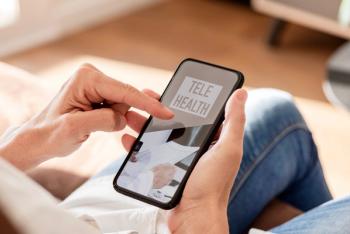
Overcoming telehealth reimbursement risks
Acknowledging increased reimbursement risks and deploying the right strategies can mean the difference between proper reimbursement and rejected claims.
Saying that telehealth has moved front and center amid the COVID-19 pandemic is an understatement. With the Centers for Medicare and Medicaid Services (CMS) now reimbursing for remote care models, adoption of telehealth is rapidly advancing as physicians strive to overcome barriers to continuity of care and maintain operations amid stay-at-home orders.
Notably, one
For many practices, telehealth is unchartered territory that poses some notable risks for reimbursement. Providers must have processes in place that ensure complete, accurate capture of documentation necessary to support codingand billing activities. Doing so will not only ensure billing compliance, but also provide a boost to the bottom line at a time when it is desperately needed.
Yet, whenever there is a change, especially on-the-fly during busy times, healthcare organizations should expect and prepare for some confusion and error. Acknowledging that there will be increased reimbursement risks and deploying the right strategies can ultimately mean the difference between proper reimbursement and rejected claims.
The devil is in the details
Because telehealth is untested from a claims denial standpoint and is certain to face future regulatory scrutiny, physician practices are wise to adopt an attitude of “over-documenting” patient visits. Foundationally, strategies should entail documenting everything that happens during an encounter – the objective, assessment, and any virtual examination or evaluation of the patient. The detail should also reflect the thought process of what a provider is monitoring and ruling out regarding a patient’s condition.
Key documentation risk areas that can impact claim approval include:
- Date, time and place of service
- Length of conversation
- Appropriate use
- Emergency room or outpatient consultations
- Provider recommendations
- Follow-up visits
On the technology side, documentation must reflect audio and visual capabilities and include proof of patient consent to use technology (e.g. FaceTime, Skype) that does not qualify as privacy protected.
The novelty of these care models may lend to miscommunication or gray areas due to the virtual nature of evaluations. For example, these areas may be dependent on a patient following through with prescribed measures. To avoid liability, it will be imperative that physicians document these areas of non-compliance in the EHR with as much detail as possible.
Telehealth reimbursement best practices
As part of a comprehensive revenue integrity strategy, physician practices should proactively monitor telehealth claims to quickly identify how payers are responding to documentation practices. Questions that need to be answered as it relates to monitoring rejected claims include: Was the claim denied due to the regulations before CMS’s policy simplification? Did lack of documentation contribute to the denial? Or, was a denial related to improper codes and modifiers?
Providers should also engage in continuous auditing of telehealth claims for proper coding and clinical documentation to minimize denials by ensuring accurate, compliant submission. These strategies require that practices stay up-to-date on evolving guidance from both government and private payers.
Increasing resource bandwidth will likely be necessary to stay one step ahead of problems and identify opportunities for process improvement. Reassigning staff resources from areas where services have been reduced-such as billing or prior authorization departments-is one strategy that can improve the outlook. Training of coding staff must be prioritized and ongoing to recognize documentation shortfalls and ensure proper use of new telehealth codes. The reality is that clinicians will lean heavily on coder expertise during this fluid reimbursement landscape to avoid confusion.
Technology can be a critical enabler of these processes in terms of monitoring updates and changes across payer reimbursement policies and ensuring that claims comply. For example, advanced auditing solutions that automatically release new ICD-10 codes and telehealth guidance can streamline the ability of a provider to operationalize changes and support ongoing monitoring.
The future of telehealth
While telehealth has faced its fair share of reimbursement hurdles in past years, recent movements have laid the foundation for widespread adoption and expansion of these services. Even after the effects of COVID-19 have passed, the industry will continue advancing remote care options to address looming physician shortages-although future uptake will largely rest with how payers behave when processing claims.
Because patients will come to expect the availability of remote options following their experiences during the pandemic, forward-thinking providers are wise to start getting the revenue integrity house in order. Those who implement systems to proactively monitor and audit the health of their telehealth claims will be best positioned to optimize reimbursement during the current challenging financial climate.
About the Author
Newsletter
Optimize your practice with the Physicians Practice newsletter, offering management pearls, leadership tips, and business strategies tailored for practice administrators and physicians of any specialty.









